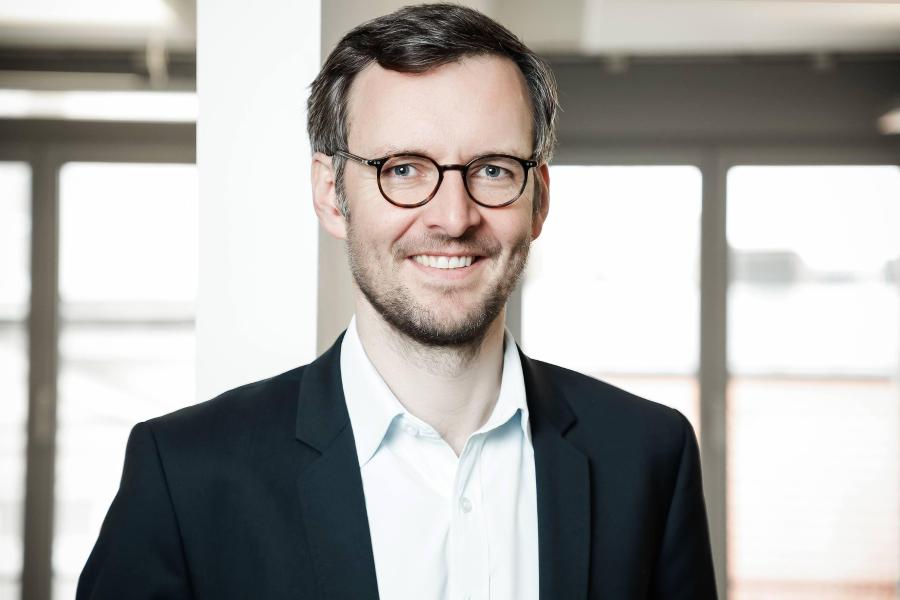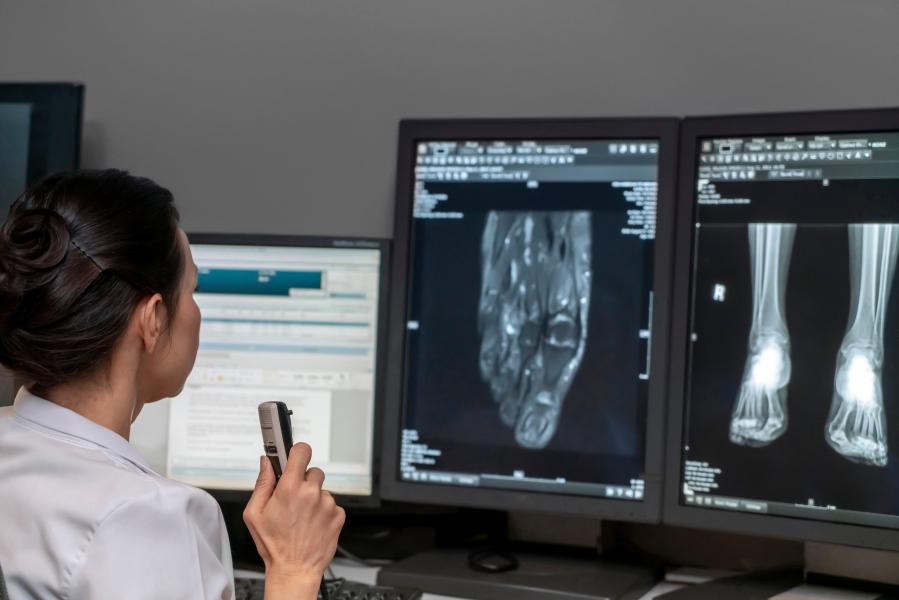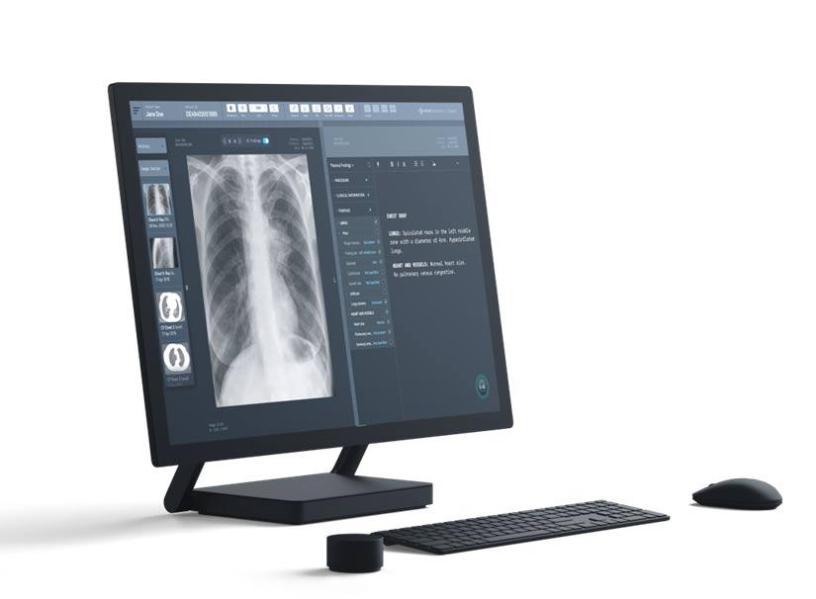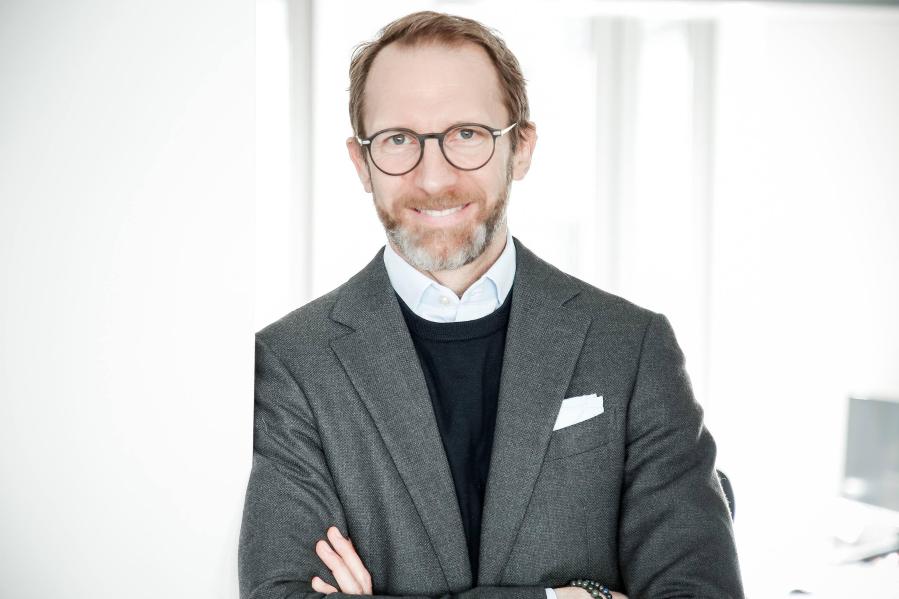Doctors spend third of their time on documentation. A German health tech startup uses artificial intelligence to cut time spent on medical reports and improve patient care
In the early 2010s, Wieland Sommer was a young, enthusiastic radiologist who had just started working in one of Europe’s biggest hospitals, LMU Klinikum in Munich. But it didn’t take him long to realise that instead of focusing on his patients, he was spending most of his time on documentation. “Even in a field like radiology, which traditionally relies heavily on reporting, I felt my time could have been used better,” Sommer says.

Wieland Sommer
Then, he had an idea: use digital technology to standardise reporting and minimise time spent on documentation.
It’s an idea that could have a big impact. After all, the average doctor spends more than a third of their working hours on documentation. And even though Europe has a better than average ratio of doctors and inhabitants compared to the rest of the world, 40% of these practitioners are close to retirement age, according to a World Health Organisation report. This means Europe has a looming threat of physician shortage. Doctors need to make each hour count.
Pen and paper no more
Radiologists are particularly in demand. Due to an aging population, more and more medical imaging is needed, but over 80% of health systems report radiology shortages.
And radiologists lose a lot of time reporting. That’s because of outdated methods of documentation. “What you need to understand is how radiologists work,” says Sommer. “We usually start with a blank document, look at the images, and dictate our analysis. We do it like that even when it comes to follow-up cases, which make up most of our work.”

Each doctor has their own style, and there’s little to no standardisation. In 2014, Sommer founded his startup, Smart Radiology, to change that.He worked with software engineers to develop templates that could be updated regularly, so that clinicians always have access to the most relevant information.
How do these templates work exactly?

Take, for example, a thorax scan. Almost 40% of thorax scans are lung cancer screenings. In that case, a radiologist can simply select the template developed for that screening. The template includes preordained fields to input relevant information, as well as clinical background information and most recent research available on the topic. The radiologist doesn’t have to start their report from scratch.
And since the software is completely voice-controlled, doctors can do all this without a single click.
Digitalising healthcare
Fast forward almost a decade later, the company has expanded its scope beyond radiology and has been rebranded as Smart Reporting. It has more than 80 employees, including a significant number of clinicians, while its software has more than 15 000 users in over 90 countries.
The European Investment Bank is supporting Smart Reporting’s expansion with €15 million in venture debt financing, backed by the InvestEU programme, which helps innovative European companies mobilise investment and supports the European Union’s sustainability agenda.
Venture debt pays back like an equity investment, but it does not deprive a company’s founders of ownership. There’s still a lot of efficiency to be gained in the healthcare sector, and we see this software as a great step forward for the much-needed healthcare digitalisation,” says Gergely Krajcsi, the EU bank’s investment officer working on the project.
“Another reason why we’re financing the company,” adds Cristina Niculescu, the European Investment Bank’s life sciences specialist, “is because it has the potential to improve healthcare through a data-driven approach that makes diagnoses easier and more accurate.”
The company’s system “could prove very useful for less specialised doctors in smaller hospitals who will be able to pick a relevant template to assess the patient, allowing them to make more informed decisions and diagnoses” says Krajcsi.
Artificial intelligence and human doctors
The company says that its software can save up to 90% of the time doctors spend on documentation, as well as cutting 30% of the time referring physicians spend interpreting these reports. It’s literally a matter of life and death, after all. Research has shown that introducing standardised reporting in pathology led to a 4.3% reduction in patient mortality.

Peter Vanovertveld
Smart Reporting is also integrating artificial intelligence into its tool. AI measures the size of registered anomalies on a patient’s scan, so when they take their next scan, their doctor can easily compare the results and see if any significant changes occurred since their previous visit. “The software automatically integrates the AI findings into the report, without replacing the doctor,” says Peter Vanovertveld, the company’s co-chief executive. “But I want to stress that we believe the single most important decision maker is the clinician. AI is there to support the doctor.”
Another advantage is that reports produced with Smart Reporting software consist of data that can be mined for further medical research. Currently, only 3% of the data collected in hospitals can be evaluated for other purposes.
Much as radiology turns the invisible visible, this software detects what is hidden below the surface. For example, trends in population health. “Imagine if this tool had been widespread back in 2019 when the first COVID-19 cases started popping up,” says Vanovertveld. “Hospital management, with access to the platform, could have noticed that something unusual was happening.”
“Maybe, next time,” he says, “we will be able to prevent it.”
